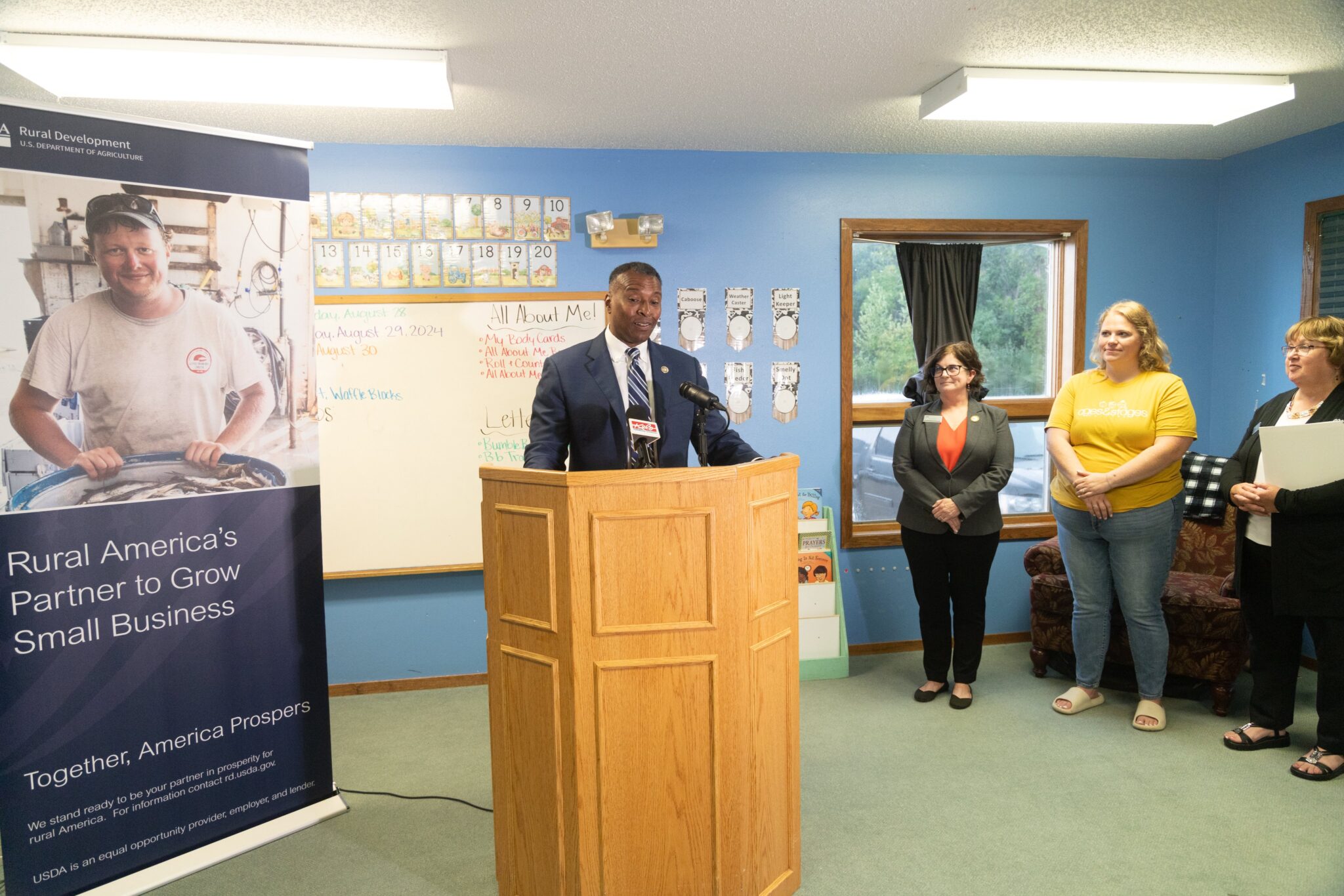
Makenzie Huber, South Dakota Searchlight
Ages and Stages Daycare is the only child care center in Clear Lake, a town near Watertown with a population of 1,218.
The owner planned to sell, and longtime employee Hailey Freeman was able to buy the center earlier this month with a $105,000 low-interest loan through GROW South Dakota, the U.S. Department of Agriculture and Interstate Telecommunications.
The USDA showcased the partnership in a press conference Thursday, where the agency also announced a $750,000 loan to Grow SD to continue such investments in rural areas of the state. USDA Under Secretary for Rural Development Basil Gooden attended the press conference.
Freeman’s loan allowed her to purchase the building and plan for improvements to the facility. She told attendees how critical the child care facility is to the community and the children she serves.
“We’re like their second homes,” she said. The center struggles with staffing, which Freeman hopes to address in order to reach the center’s full capacity.
USDA Rural Development State Director Nikki Gronli said the department has helped seven communities in South Dakota through similar lending partnerships. That includes investments in child care centers in Custer, Black Hawk, Tea, Oacoma, Platte, Ipswich and Pierre.
“Child care is economic development,” Gronli said. “The beauty of our programs is that we have a lot of flexibility to look at what the critical needs are in rural South Dakota and respond to them.”
In total, Grow SD has received around $22 million in funding from USDA Rural Development over a 30-year partnership for a variety of rural economic development projects. GROW SD CEO Lori Finnesand said the nonprofit has financed over $49 million in loans to more than 700 small businesses.
Those loans have created or retained more than 4,000 jobs in rural areas of the state, she said. The money has helped businesses such as repair shops and grocery stores, and has allowed people to do business in their own community rather than driving miles away for goods and services.
“Loans like this potentially keep those small communities alive,” Finnesand said.
Low-interest loan partnerships like the one between Interstate Telecommunications, GROW SD and the USDA help spread the risk of loans, especially when nonprofits can “be a little more flexible” than traditional lenders might be, Finnesand added.
Communities who aren’t served by GROW SD can reach out to other rural nonprofits working with the USDA if they would like to apply for a loan, Gronli added. Or businesses can work directly with the USDA grant program.
Three child care grant investments from the USDA in South Dakota will be announced soon, she said.
